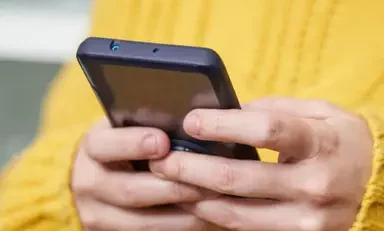The EUDI Wallet* enables European citizens to prove their identity securely—both in-person and online. Depending on the context, the Wallet can be used either at close range (proximity) or remotely via the Internet. These interaction methods refer to specific presentation flows.

*the EUDI Wallet refers to national digital identity wallets that are developed and provided by EU Member States, based on a common European framework.
There are four main flows, each suited to a different situation. Depending on the use case—such as accessing eGovernment services, signing a contract, or receiving a medical prescription—one or more of these flows may be used.
Proximity use: when the wallet is used nearby
Supervised use (with a person)
The user and their device are close to the service provider, for example at a public administration office or a bank. Identity data is exchanged directly between the Wallet and the service provider’s system using technologies like NFC, Bluetooth, after presenting a QR code. The process is overseen by a representative of the service provider.
Example: A citizen visits their town hall to renew an ID card. The clerk initiates the process, and the user taps their phone on a reader or scans a QR code. The necessary identity data is instantly and securely transferred via their Wallet.
Unsupervised use (with a machine)
Similar to the supervised flow, but the user interacts with a machine—such as a terminal or a self-service kiosk to retrieve the keys of a rented car for example—instead of a person. The same technologies are used to establish a secure connection between the Wallet and the machine.
Example: A traveler picks up a rental car at an airport. At the self-service kiosk, they scan a QR code, approve the identity request on their phone, and retrieve the keys—no staff interaction required.
In both cases, the connection between the Wallet and the service is secure and encrypted, and may work even without internet access.
Remote use: when the wallet is used online
In remote flows, the user accesses a service online, and the Wallet provides the necessary information over the internet. Two remote scenarios exist.
Same device remote use
The user accesses the service (e.g., a website or an app) on the same device that contains the Wallet—typically a smartphone. When the service requests identity data, the browser or app forwards this request to the Wallet. After the user gives consent, the Wallet sends directly the requested data securely back to the service, without depending on any issuer’s backend.
Example: A student applies for a university grant via an online portal using their smartphone. When asked for ID verification, the app connects to the Wallet, and upon approval, the required data is transmitted instantly.
This is a common flow for online services, such as opening a bank account or accessing government portals.
Cross-device remote use
The user accesses the online service on a different device—for example, using a laptop—while the Wallet is installed on their smartphone. In this case:
- The browser on the laptop displays a QR code.
- The user scans the QR code with their smartphone.
- The Wallet transmits the requested identity data to the service provider.
This flow is useful when users work across multiple devices, while keeping their Wallet secured on their personal phone.
Example: A professional signs a freelance contract on their desktop computer. The platform requests identity proof and displays a QR code. The user scans it with their phone, approves the request, and the verified data is sent securely.
In short, the EUDI Wallet is flexible. It allows users to prove who they are in person, with a QR code or NFC, or online, from their phone or even from another device. Whatever the situation, the goal is the same: make it easy and safe for European citizens to prove their identity, while keeping full control over their personal data.
